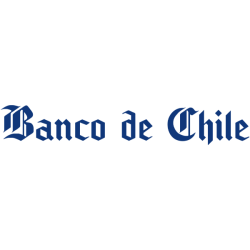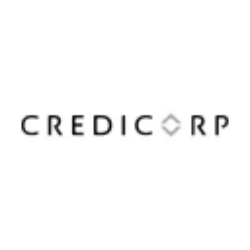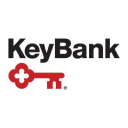BSBR

Banco Santander (Brasil) S.A.
BSBR
(2.0)4,00 USD
0.99% ROA
10.62% ROE
18.55x PER
213.107.983.111,58 USD
379.93% DER
1.11% Yield
27.02% NPM
Banco Santander (Brasil) S.A. Stock Analysis
Banco Santander (Brasil) S.A. Fundamental Analysis
Fundamental analysis in stock investing is like studying the foundation of a house before buying it. It involves looking at a company's financial health, like its earnings, assets, and debts, to determine if it's a good investment based on its fundamental strength and potential for growth.
| # | Analysis | Rating |
|---|---|---|
| 1 |
Dividend
Investors can take comfort in the company's unwavering commitment to dividends, as it has consistently distributed payouts over the past five years, ensuring a reliable income stream. |
|
| 2 |
ROE
The stock's ROE falls within an average range (12.74%), demonstrating satisfactory profitability and efficiency in utilizing shareholders' equity. |
|
| 3 |
ROA
The stock's ROA (0.98%) indicates that it's doing well in making money from the things it owns. This makes it a good option to invest and make consistent profits. |
|
| 4 |
PBV
The stock's PBV ratio (2.02x) reflects a fair valuation, making it an attractive option for investors seeking balanced opportunities. |
|
| 5 |
Assets Growth
This company's revenue has shown remarkable growth over the past three years, making it an excellent choice for seeking a consistently prosperous investment. |
|
| 6 |
Graham Number
The company's Graham number suggests that its stock price is underestimated, implying that it may present a compelling investment opportunity. |
|
| 7 |
Buffet Intrinsic Value
Warren Buffett's formula suggests that the company's stock is undervalued (107), making it an appealing investment prospect with its intrinsic value surpassing the current market price. |
|
| 8 |
DER
The stock is burdened with a heavy load of debt (129%), making it financially unstable and potentially risky for investors. |
|
| 9 |
Revenue Growth
Company's revenue has remained stagnant over the past three years, indicating a lack of growth and making it a less favorable option. |
|
| 10 |
Net Profit Growth
This company's net profit has remained flat over the past five years, suggesting a lack of growth and making it a less attractive investment opportunity. |
|
| 11 |
Dividend Growth
The company's dividend growth has remained unchanged for three years, signaling a lack of positive momentum and making it a less favorable investment choice. |
Banco Santander (Brasil) S.A. Technical Analysis
Technical analysis in stock investing is like reading the patterns on a weather map to predict future weather conditions. It involves studying past stock price movements and trading volumes to make predictions about where a stock's price might go next, without necessarily looking at the company's financial health.
| # | Analysis | Recommendation |
|---|---|---|
| 1 | Awesome Oscillator | Buy |
| 2 | MACD | Buy |
| 3 | RSI | Hold |
| 4 | Stoch RSI | Hold |
Banco Santander (Brasil) S.A. Price Chart
Financial Statements
Financial statements are like report cards for companies. They show how much money a company makes (income statement), what it owns and owes (balance sheet), and where it spends its money (cash flow statement), helping stock investors understand if a company is healthy and worth investing in.
Income Statements
An income statement for a company is like a scoreboard for its profits and losses. It shows how much money the company made (revenue) and how much it spent to make that money (expenses), helping stock investors see if a company is making a profit or not.
Revenue in stock investing is the total amount of money a company earns from its sales, and it's a key factor that investors consider to assess a company's financial performance and growth potential.
| Year | Revenue | Growth |
|---|---|---|
| 2006 | 5.247.511.000 | |
| 2007 | 10.046.637.000 | 47.77% |
| 2008 | 13.945.643.000 | 27.96% |
| 2009 | 20.987.957.000 | 33.55% |
| 2010 | 24.223.827.000 | 13.36% |
| 2011 | 25.338.999.000 | 4.4% |
| 2012 | 22.841.042.000 | -10.94% |
| 2013 | 22.467.439.000 | -1.66% |
| 2014 | 24.404.638.000 | 7.94% |
| 2015 | 18.027.572.000 | -35.37% |
| 2016 | 36.889.542.000 | 51.13% |
| 2017 | 37.623.519.000 | 1.95% |
| 2018 | 38.521.865.000 | 2.33% |
| 2019 | 46.958.263.000 | 17.97% |
| 2020 | 32.421.692.000 | -44.84% |
| 2021 | 48.722.248.000 | 33.46% |
| 2022 | 43.282.508.000 | -12.57% |
| 2023 | 41.531.432.000 | -4.22% |
| 2023 | 39.965.346.000 | -3.92% |
| 2024 | 153.660.728.000 | 73.99% |
Research and Development Expenses are the costs a company incurs to create and improve its products or services, which can be important for investors to evaluate a company's innovation and potential for future growth.
| Year | Research and Development Expenses | Growth |
|---|---|---|
| 2006 | 0 | |
| 2007 | 0 | 0% |
| 2008 | 0 | 0% |
| 2009 | 0 | 0% |
| 2010 | 0 | 0% |
| 2011 | 0 | 0% |
| 2012 | 0 | 0% |
| 2013 | 0 | 0% |
| 2014 | 0 | 0% |
| 2015 | 0 | 0% |
| 2016 | 0 | 0% |
| 2017 | 0 | 0% |
| 2018 | 0 | 0% |
| 2019 | 0 | 0% |
| 2020 | 0 | 0% |
| 2021 | 0 | 0% |
| 2022 | 0 | 0% |
| 2023 | 0 | 0% |
| 2023 | 0 | 0% |
| 2024 | 0 | 0% |
General and Administrative Expenses are the costs a company incurs to run its day-to-day operations, such as office rent, salaries, and utilities, which investors consider to understand a company's overall efficiency and management effectiveness.
| Year | General and Administrative Expenses | Growth |
|---|---|---|
| 2006 | 1.453.449.000 | |
| 2007 | 2.871.100.000 | 49.38% |
| 2008 | 5.416.887.000 | 47% |
| 2009 | 10.947.217.000 | 50.52% |
| 2010 | 11.230.602.000 | 2.52% |
| 2011 | 12.372.632.000 | 9.23% |
| 2012 | 13.203.648.000 | 6.29% |
| 2013 | 12.052.298.000 | -9.55% |
| 2014 | 12.186.930.000 | 1.1% |
| 2015 | 12.595.269.000 | 3.24% |
| 2016 | 13.070.150.000 | 3.63% |
| 2017 | 14.095.972.000 | 7.28% |
| 2018 | 14.750.967.000 | 4.44% |
| 2019 | 15.368.463.000 | 4.02% |
| 2020 | 16.181.687.000 | 5.03% |
| 2021 | 16.492.554.000 | 1.88% |
| 2022 | 17.550.570.000 | 6.03% |
| 2023 | 18.052.116.000 | 2.78% |
| 2023 | 17.546.059.000 | -2.88% |
| 2024 | 18.545.988.000 | 5.39% |
EBITDA stands for Earnings Before Interest, Taxes, Depreciation, and Amortization. It is a measure that helps stock investors analyze a company's profitability by looking at its earnings without considering certain expenses. This helps to get a clearer picture of the company's financial performance and its ability to generate cash flow.
| Year | EBITDA | Growth |
|---|---|---|
| 2006 | 0 | |
| 2007 | 0 | 0% |
| 2008 | 0 | 0% |
| 2009 | 0 | 0% |
| 2010 | 0 | 0% |
| 2011 | 0 | 0% |
| 2012 | 0 | 0% |
| 2013 | 0 | 0% |
| 2014 | 0 | 0% |
| 2015 | 0 | 0% |
| 2016 | 0 | 0% |
| 2017 | 0 | 0% |
| 2018 | 0 | 0% |
| 2019 | 0 | 0% |
| 2020 | 0 | 0% |
| 2021 | 0 | 0% |
| 2022 | 0 | 0% |
| 2023 | 16.721.932.000 | 100% |
| 2023 | 0 | 0% |
| 2024 | -6.358.196.000 | 100% |
Gross profit is the money a company makes from selling its products or services after subtracting the cost of producing or providing them, and it is an important measure for investors to understand a company's profitability.
| Year | Gross Profit | Growth |
|---|---|---|
| 2006 | 5.247.511.000 | |
| 2007 | 10.046.637.000 | 47.77% |
| 2008 | 13.945.643.000 | 27.96% |
| 2009 | 20.987.957.000 | 33.55% |
| 2010 | 24.223.827.000 | 13.36% |
| 2011 | 25.245.272.000 | 4.05% |
| 2012 | 23.236.712.000 | -8.64% |
| 2013 | 22.467.439.000 | -3.42% |
| 2014 | 24.404.638.000 | 7.94% |
| 2015 | 18.027.572.000 | -35.37% |
| 2016 | 36.889.542.000 | 51.13% |
| 2017 | 37.623.519.000 | 1.95% |
| 2018 | 38.521.865.000 | 2.33% |
| 2019 | 46.958.263.000 | 17.97% |
| 2020 | 32.421.692.000 | -44.84% |
| 2021 | 48.722.248.000 | 33.46% |
| 2022 | 43.282.508.000 | -12.57% |
| 2023 | 41.531.432.000 | -4.22% |
| 2023 | 39.965.346.000 | -3.92% |
| 2024 | 153.660.728.000 | 73.99% |
Net income in stock investing is like the money a company actually gets to keep as profit after paying all its bills, and it's an important measure to understand how well a company is doing financially.
| Year | Net Profit | Growth |
|---|---|---|
| 2006 | 803.619.000 | |
| 2007 | 1.845.399.000 | 56.45% |
| 2008 | 1.598.650.000 | -15.43% |
| 2009 | 5.507.606.000 | 70.97% |
| 2010 | 7.382.093.000 | 25.39% |
| 2011 | 7.747.925.000 | 4.72% |
| 2012 | 5.448.660.000 | -42.2% |
| 2013 | 5.723.494.000 | 4.8% |
| 2014 | 5.630.023.000 | -1.66% |
| 2015 | 9.783.740.000 | 42.46% |
| 2016 | 7.334.563.000 | -33.39% |
| 2017 | 8.924.064.000 | 17.81% |
| 2018 | 12.582.477.000 | 29.08% |
| 2019 | 16.406.932.000 | 23.31% |
| 2020 | 13.418.529.000 | -22.27% |
| 2021 | 15.528.052.000 | 13.59% |
| 2022 | 14.287.093.000 | -8.69% |
| 2023 | 11.083.784.000 | -28.9% |
| 2023 | 9.449.313.000 | -17.3% |
| 2024 | 14.469.916.000 | 34.7% |
EPS, or earnings per share, is a measure that shows how much profit a company has earned for each outstanding share of its stock, and it is important for stock investors as it helps understand the profitability of a company and compare it with other companies in the market.
| Year | Earning per Share (EPS) | Growth |
|---|---|---|
| 2006 | 0 | |
| 2007 | 1 | 0% |
| 2008 | 1 | 0% |
| 2009 | 1 | 0% |
| 2010 | 1 | 0% |
| 2011 | 1 | 100% |
| 2012 | 1 | 0% |
| 2013 | 1 | 0% |
| 2014 | 1 | 0% |
| 2015 | 1 | 100% |
| 2016 | 1 | 0% |
| 2017 | 1 | 100% |
| 2018 | 2 | 0% |
| 2019 | 2 | 50% |
| 2020 | 2 | -100% |
| 2021 | 2 | 50% |
| 2022 | 2 | -100% |
| 2023 | 1 | 0% |
| 2023 | 1 | 0% |
| 2024 | 2 | 100% |
Cashflow Statements
Cashflow statements show the movement of money in and out of a company, helping stock investors understand how much money a company makes and spends. By examining cashflow statements, investors can assess if a company is generating enough cash to pay its bills, invest in growth, and provide returns to stockholders.
Free cash flow is the leftover cash that a company generates after covering its operating expenses and capital expenditures, which is important for stock investors as it shows how much money a company has available to invest in growth, pay dividends, or reduce debt.
| Year | Free Cashflow | Growth |
|---|---|---|
| 2006 | -981.636.000 | |
| 2007 | -563.611.000 | -74.17% |
| 2008 | 2.727.523.000 | 120.66% |
| 2009 | -15.495.723.000 | 117.6% |
| 2010 | -12.732.396.000 | -21.7% |
| 2011 | -13.663.384.000 | 6.81% |
| 2012 | 1.413.569.000 | 1066.59% |
| 2013 | 19.358.509.000 | 92.7% |
| 2014 | -6.512.009.000 | 397.27% |
| 2015 | 2.245.828.000 | 389.96% |
| 2016 | 5.204.891.000 | 56.85% |
| 2017 | 48.417.970.000 | 89.25% |
| 2018 | 5.266.851.000 | -819.3% |
| 2019 | 21.427.292.000 | 75.42% |
| 2020 | 40.312.248.000 | 46.85% |
| 2021 | 4.441.953.000 | -807.53% |
| 2022 | 3.983.367.000 | -11.51% |
| 2023 | 22.015.143.000 | 81.91% |
| 2023 | 59.473.710.000 | 62.98% |
| 2024 | -17.814.706.999 | 433.85% |
Operating cash flow represents the cash generated or consumed by a company's day-to-day operations, excluding external investing or financing activities, and is crucial for stock investors as it shows how much cash a company is generating from its core business operations.
| Year | Operating Cashflow | Growth |
|---|---|---|
| 2006 | -481.230.000 | |
| 2007 | 81.228.000 | 692.44% |
| 2008 | 5.553.843.000 | 98.54% |
| 2009 | -12.213.509.000 | 145.47% |
| 2010 | -10.326.319.000 | -18.28% |
| 2011 | -11.110.073.000 | 7.05% |
| 2012 | 4.581.806.000 | 342.48% |
| 2013 | 21.724.417.000 | 78.91% |
| 2014 | -4.093.876.000 | 630.66% |
| 2015 | 4.026.292.000 | 201.68% |
| 2016 | 6.748.607.000 | 40.34% |
| 2017 | 50.262.930.000 | 86.57% |
| 2018 | 8.277.372.000 | -507.23% |
| 2019 | 24.871.800.000 | 66.72% |
| 2020 | 42.317.956.000 | 41.23% |
| 2021 | 6.807.143.000 | -521.67% |
| 2022 | 6.847.026.000 | 0.58% |
| 2023 | 25.973.183.000 | 73.64% |
| 2023 | 60.211.217.000 | 56.86% |
| 2024 | -16.943.958.999 | 455.36% |
Capex, short for capital expenditures, refers to the money a company spends on acquiring or upgrading tangible assets like buildings, equipment, or technology, which is important for stock investors as it indicates how much a company is investing in its infrastructure to support future growth and profitability.
| Year | Capital Expenditure | Growth |
|---|---|---|
| 2006 | 500.406.000 | |
| 2007 | 644.839.000 | 22.4% |
| 2008 | 2.826.320.000 | 77.18% |
| 2009 | 3.282.214.000 | 13.89% |
| 2010 | 2.406.077.000 | -36.41% |
| 2011 | 2.553.311.000 | 5.77% |
| 2012 | 3.168.237.000 | 19.41% |
| 2013 | 2.365.908.000 | -33.91% |
| 2014 | 2.418.133.000 | 2.16% |
| 2015 | 1.780.464.000 | -35.81% |
| 2016 | 1.543.716.000 | -15.34% |
| 2017 | 1.844.960.000 | 16.33% |
| 2018 | 3.010.521.000 | 38.72% |
| 2019 | 3.444.508.000 | 12.6% |
| 2020 | 2.005.708.000 | -71.74% |
| 2021 | 2.365.190.000 | 15.2% |
| 2022 | 2.863.659.000 | 17.41% |
| 2023 | 3.958.040.000 | 27.65% |
| 2023 | 737.507.000 | -436.68% |
| 2024 | 870.748.000 | 15.3% |
Balance Sheet
Balance sheets provide a snapshot of a company's financial health and its assets (such as cash, inventory, and property) and liabilities (like debts and obligations) at a specific point in time. For stock investors, balance sheets help assess the company's overall worth and evaluate its ability to meet financial obligations and support future growth.
Equity refers to the ownership interest or stake that shareholders have in a company, representing their claim on its assets and earnings after all debts and liabilities are paid.
| Year | Equity | Growth |
|---|---|---|
| 2006 | 7.975.611.000 | |
| 2007 | 9.264.593.000 | 13.91% |
| 2008 | 48.756.557.000 | 81% |
| 2009 | 69.266.743.000 | 29.61% |
| 2010 | 73.363.394.000 | 5.58% |
| 2011 | 78.031.992.000 | 5.98% |
| 2012 | 81.566.111.000 | 4.33% |
| 2013 | 81.655.302.000 | 0.11% |
| 2014 | 78.683.293.000 | -3.78% |
| 2015 | 79.835.284.000 | 1.44% |
| 2016 | 84.812.559.000 | 5.87% |
| 2017 | 87.087.601.000 | 2.61% |
| 2018 | 91.595.460.000 | 4.92% |
| 2019 | 97.209.161.000 | 5.77% |
| 2020 | 106.089.872.000 | 8.37% |
| 2021 | 105.974.495.000 | -0.11% |
| 2022 | 110.680.176.000 | 4.25% |
| 2023 | 114.856.354.000 | 3.64% |
| 2023 | 113.750.372.000 | -0.97% |
| 2024 | 117.573.503.000 | 3.25% |
Assets represent the valuable resources that a company owns, such as cash, inventory, property, and equipment, and understanding a company's assets helps investors assess its value and potential for generating future profits.
| Year | Assets | Growth |
|---|---|---|
| 2006 | 102.026.985.000 | |
| 2007 | 116.036.822.000 | 12.07% |
| 2008 | 339.834.652.000 | 65.85% |
| 2009 | 315.972.576.000 | -7.55% |
| 2010 | 374.662.683.000 | 15.66% |
| 2011 | 399.886.082.000 | 6.31% |
| 2012 | 421.084.963.000 | 5.03% |
| 2013 | 453.052.695.000 | 7.06% |
| 2014 | 520.230.910.000 | 12.91% |
| 2015 | 605.394.528.000 | 14.07% |
| 2016 | 634.393.240.000 | 4.57% |
| 2017 | 645.735.096.000 | 1.76% |
| 2018 | 723.865.007.000 | 10.79% |
| 2019 | 762.237.452.000 | 5.03% |
| 2020 | 936.201.485.000 | 18.58% |
| 2021 | 931.208.396.000 | -0.54% |
| 2022 | 985.450.829.000 | 5.5% |
| 2023 | 1.115.652.776.000 | 11.67% |
| 2023 | 1.126.953.893.000 | 1% |
| 2024 | 1.189.995.630.000 | 5.3% |
Liabilities refer to the financial obligations or debts that a company owes to creditors or external parties, and understanding a company's liabilities is important for investors as it helps assess the company's financial risk and ability to meet its obligations.
| Year | Liabilities | Growth |
|---|---|---|
| 2006 | 94.051.374.000 | |
| 2007 | 106.772.229.000 | 11.91% |
| 2008 | 291.078.095.000 | 63.32% |
| 2009 | 246.705.833.000 | -17.99% |
| 2010 | 301.299.289.000 | 18.12% |
| 2011 | 321.854.090.000 | 6.39% |
| 2012 | 339.518.852.000 | 5.2% |
| 2013 | 371.397.393.000 | 8.58% |
| 2014 | 441.547.617.000 | 15.89% |
| 2015 | 525.559.244.000 | 15.99% |
| 2016 | 549.580.681.000 | 4.37% |
| 2017 | 558.647.495.000 | 1.62% |
| 2018 | 632.269.547.000 | 11.64% |
| 2019 | 89.419.308.000 | -607.08% |
| 2020 | 74.541.769.000 | -19.96% |
| 2021 | 100.903.390.000 | 26.13% |
| 2022 | 874.770.653.000 | 88.47% |
| 2023 | 1.000.796.422.000 | 12.59% |
| 2023 | 149.976.728.000 | -567.3% |
| 2024 | 1.072.422.127.000 | 86.02% |
Banco Santander (Brasil) S.A. Financial Ratio (TTM)
Valuation Metrics
- Revenue per Share
- 13.48
- Net Income per Share
- 1.54
- Price to Earning Ratio
- 18.55x
- Price To Sales Ratio
- 2.12x
- POCF Ratio
- 3.26
- PFCF Ratio
- 3.43
- Price to Book Ratio
- 1.82
- EV to Sales
- 4.53
- EV Over EBITDA
- 84.77
- EV to Operating CashFlow
- 6.97
- EV to FreeCashFlow
- 7.33
- Earnings Yield
- 0.05
- FreeCashFlow Yield
- 0.29
- Market Cap
- 213,11 Bil.
- Enterprise Value
- 455,29 Bil.
- Graham Number
- 23.34
- Graham NetNet
- -108.85
Income Statement Metrics
- Net Income per Share
- 1.54
- Income Quality
- 5.68
- ROE
- 0.1
- Return On Assets
- 0.01
- Return On Capital Employed
- 0.01
- Net Income per EBT
- 0.7
- EBT Per Ebit
- 1.16
- Ebit per Revenue
- 0.33
- Effective Tax Rate
- 0.3
Margins
- Sales, General, & Administrative to Revenue
- 0.15
- Research & Developement to Revenue
- 0
- Stock Based Compensation to Revenue
- 0
- Gross Profit Margin
- 1.04
- Operating Profit Margin
- 0.33
- Pretax Profit Margin
- 0.39
- Net Profit Margin
- 0.27
Dividends
- Dividend Yield
- 0.01
- Dividend Yield %
- 1.11
- Payout Ratio
- 0.48
- Dividend Per Share
- 0.32
Operating Metrics
- Operating Cashflow per Share
- 8.75
- Free CashFlow per Share
- 8.32
- Capex to Operating CashFlow
- 0.05
- Capex to Revenue
- 0.03
- Capex to Depreciation
- 1.17
- Return on Invested Capital
- 0.02
- Return on Tangible Assets
- 0.01
- Days Sales Outstanding
- 32.65
- Days Payables Outstanding
- 0
- Days of Inventory on Hand
- -350.07
- Receivables Turnover
- 11.18
- Payables Turnover
- 0
- Inventory Turnover
- -1.04
- Capex per Share
- 0.43
Balance Sheet
- Cash per Share
- 35,98
- Book Value per Share
- 15,76
- Tangible Book Value per Share
- 11.4
- Shareholders Equity per Share
- 15.72
- Interest Debt per Share
- 70.3
- Debt to Equity
- 3.8
- Debt to Assets
- 0.37
- Net Debt to EBITDA
- 45.09
- Current Ratio
- 0.88
- Tangible Asset Value
- 85,06 Bil.
- Net Current Asset Value
- -825,68 Bil.
- Invested Capital
- 6310706000
- Working Capital
- -32,66 Bil.
- Intangibles to Total Assets
- 0.03
- Average Receivables
- 8,80 Bil.
- Average Payables
- 0,00 Bil.
- Average Inventory
- -29631228000
- Debt to Market Cap
- 2.09
Dividends
Dividends in stock investing are like rewards that companies give to their shareholders. They are a portion of the company's profits distributed to investors, typically in the form of cash payments, as a way for them to share in the company's success.
| Year | Dividends | Growth |
|---|---|---|
| 2009 | 0 | |
| 2010 | 1 | 0% |
| 2011 | 0 | 0% |
| 2012 | 0 | 0% |
| 2013 | 0 | 0% |
| 2014 | 0 | 0% |
| 2015 | 0 | 0% |
| 2016 | 0 | 0% |
| 2017 | 1 | 0% |
| 2018 | 1 | 0% |
| 2019 | 1 | 0% |
| 2020 | 1 | 0% |
| 2021 | 0 | 0% |
| 2022 | 0 | 0% |
| 2023 | 0 | 0% |
| 2024 | 0 | 0% |
Banco Santander (Brasil) S.A. Profile
About Banco Santander (Brasil) S.A.
Banco Santander (Brasil) S.A., together with its subsidiaries, provides various banking products and services to individuals, small and medium enterprises, and corporate customers in Brazil and internationally. The company operates in two segments, Commercial Banking and Global Wholesale Banking. It offers deposits and other bank funding instruments; debit and credit cards; digital prepaid solutions; payment platform; loyalty programs; employee benefit vouchers; payroll loans; digital lending and online debt renegotiation services; mortgages; home equity financing products; consumer credit; and local loans, commercial and trade finance, guarantees, structured loans, and cash management and funding solutions, as well as on-lending transfer services. It also provides funding and financial advisory services related to projects, origination and distribution of fixed-income securities in the debt capital markets, financing of acquisitions and syndicated loans, other structured financing arrangements, and subordinated debt and energy efficiency transactions; advisory services for mergers and acquisitions, and equity capital markets transactions; and stock brokerage and advisory, equity, and equity research services. In addition, the company structures and offers foreign exchange, derivative, and investment products for institutional investors, and corporate and retail customers; and provides market making services. Further, it offers instant payment services; range of products and services focused on the agribusiness sector; microfinance services; and online automotive listing and digital car insurance solutions, as well as digital trading platform. Additionally, it provides its financial services and products to its customers through multichannel distribution network comprising branches, mini-branches, ATMs, call centers, Internet banking, and mobile banking. Banco Santander (Brasil) S.A. was incorporated in 1985 and is headquartered in São Paulo, Brazil.
- CEO
- Mr. Mario Roberto Opice Leao
- Employee
- 55.035
- Address
-
Avenida Presidente Juscelino Kubitschek
São Paulo, 04543-011
Banco Santander (Brasil) S.A. Executives & BODs
| # | Name | Age |
|---|---|---|
| 1 |
Mr. Ede Ilson Viani Vice President Executive Officer, Member of the Board of Executive Officers & Director |
70 |
| 2 |
Mr. Luis Guilherme Mattos de Oliem Bittencourt Vice President, Executive Officer & Member of the Board of Executive Officers |
70 |
| 3 |
Mr. Reginaldo Antonio Ribeiro Officer & Member of the Board of Executive Officers |
70 |
| 4 |
Mr. Daniel Mendonca Pareto Officer, Member of Board of Executive Officer & Board Secretary |
70 |
| 5 |
Mr. André de Carvalho Novaes Officer & Member of the Board of Executive Officers |
70 |
| 6 |
Mr. Gustavo Alejo Viviani Chief Financial Officer, Vice President, IR Officer & Member of the Board of Executive Officers |
70 |
| 7 |
Mr. Antonio Pardo de Santayana Montes Vice President Executive Officer & Member of the Board of Executive Officers |
70 |
| 8 |
Mr. Luiz Masagão Ribeiro Filho Officer & Member of the Board of Executive Officers |
70 |
| 9 |
Mr. Gilberto Duarte de Abreu Filho Vice President Executive Officer & Member of the Board of Executive Officers |
70 |
| 10 |
Mr. Mario Roberto Opice Leao Chief Executive Officer, Director & Member of the Board of Executive Officers |
70 |



















